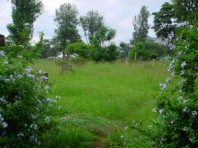
(Updated December 2018)
![]()
GAZETTE NOTICE NO. 10932
THE NATIONAL MUSEUMS AND HERITAGE ACT (No. 6
of 2006)
DECLARATION OF A PROTECTED AREA
IN EXERCISE of the powers conferred by section 25 (1) (c) of the National Museums and Heritage and heritage Act, the Minister of State for National Heritage and Culture, in consultation with the National Museums of Kenya, declares the site specified in the Schedule, which he considers to be of historical interest, to be a protected area within the meaning of the Act.
Any objection to the declaration shall be lodged with the Minister within two (2) months from the date of publication of the notice.
SCHEDULE
NAIROBI SOUTH CEMETERY
All the area known as the Nairobi South Cemetery measuring approximately 0.946 hectare on L.R. No. 209/256 and located along the Uhuru Highway and adjacent to the Railway Golf Course in Nairobi Province.
Dated the 24th September, 2009.
WILLIAM OLE NTIMAMA,
Minister for State for National heritage and Culture.
![]()
Nairobi South Cemetery was laid out and managed in its early years by the Uganda Railway Authority. The earliest recorded burial is that of P C Scott who died in December 1896, before Nairobi existed as a formal town.
Many of those buried here are the people who were the builders of Nairobi, engineers, lawyers, craftsmen and labourers alike, making the cemetery an important historic site.
Lack of maintenance had seen the condition of the cemetery deteriorate rapidly with vandalism taking a toll on many of the headstones. The overgrown nature of the place made it an ideal place for criminal characters to hide out and even spend the night.
In 2007 it was apparent something needed to be done. The following photographs show the cemetery before any work was carried out and then after the grass was cut.
 |
 |
|---|---|
 |
 |
The late Monty Brown took it upon himself to undertake the restoration of the site and set about the work with what seemed an inexhaustible amount of enthusiasm and dedication.
Work was started in early 2007 and steady progress was made over the next two years on improving the condition of the cemetery. The area was eventually cleared and a regular handyman was employed for a few days a week to keep the grass cut and and ensure everything is kept tidy.
Monty had brought workmen to the cemetery for a week at a time which enabled remarkable progress to be made in renovating some of the damaged graves. The majority of stone markers were uncovered helping to identify the location of all unmarked graves. This was a great help in putting together a preliminary plan of the grounds with most graves then being identified.
The following photographs were taken at the end of February 2009 and clearly show the improvements that had taken place.
Not content with merely restoring the cemetery Monty was determined to secure its future and his approaches to the National Museums of Kenya in no small way contributed to it being declared a site of historical interest and as such became a protected area.